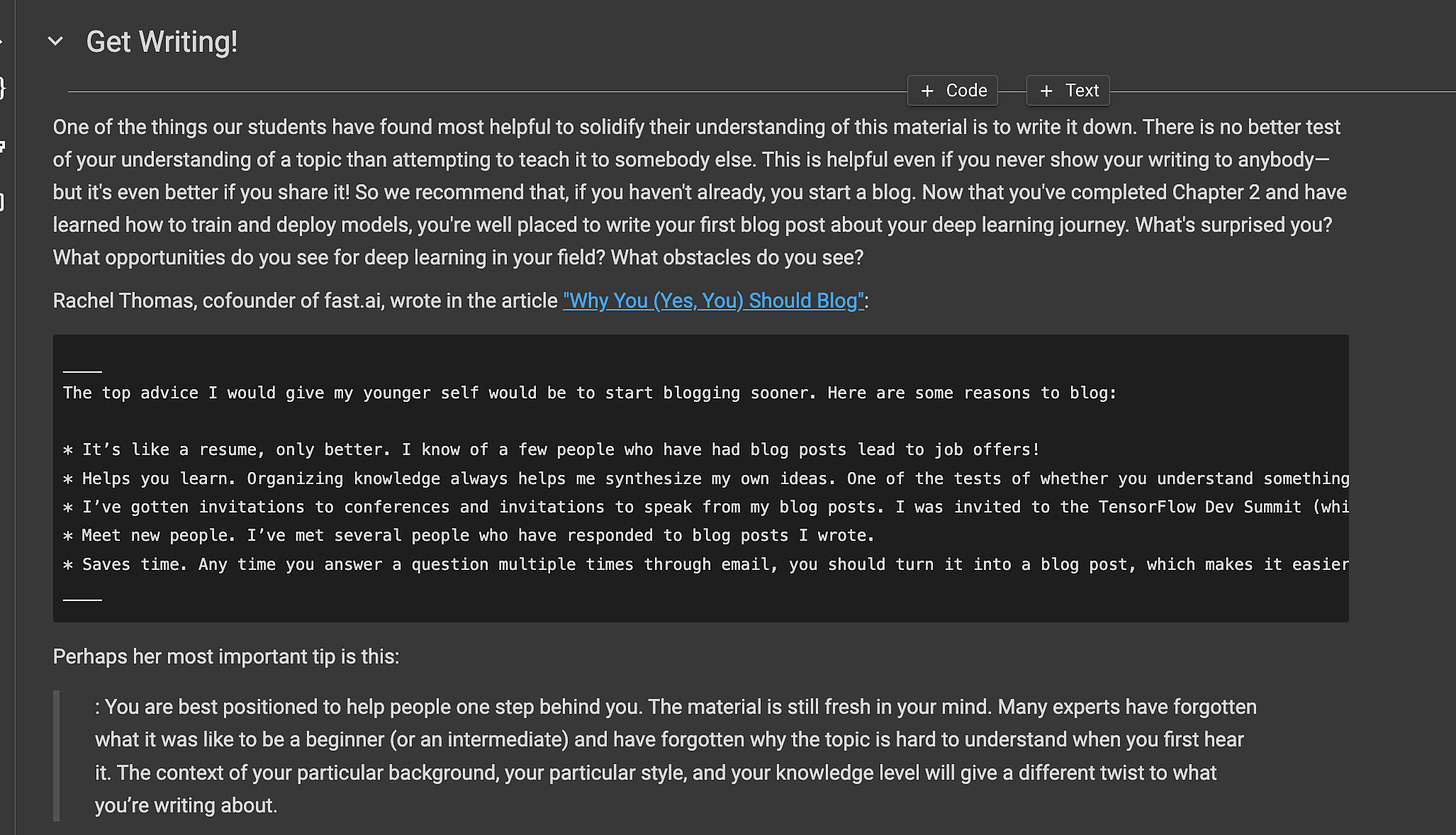Lesson #0: Hello World!
(NOTE: this first appeared on Substack here)
I’ve always been curious about deep learning—I led a book club on Kate Crawford’s Atlas of AI , worked on a piece for CHSI’s “Surveillance: From Vision to Data” exhibit, and took my college’s computer science core in machine learning, but I’ve never been deep enough to deploy projects myself or get deeper into the technical things.
I’ve gotten increasingly curious over the last few months—reading a handful of recent papers, playing with new open source models (Ollama is awesome!) and just started work with Ben Spiegel on multi-agent reinforcement learning.
I’m hoping to brush up before I get deeper into the weeds. I’ve repeatedly been recommended fast.ai, which is designed for people like me, who quickly want to get to practical applications and have a programming background.
The course is, essentially, in two sections, lengthy YouTube videos and a textbook, which is available both as Jupyter Notebooks and in dead-tree form. I’ll be alternating between them:
 The 2020 book, a recent arrival in the mail.
The 2020 book, a recent arrival in the mail.
I decided to start posting here because the course heavily encourages you to blog through it, both for retention, accountability, and posterity.
 From the notebook for chapter 2.
From the notebook for chapter 2.
I’m going to do that! This is my first post!
Lucas